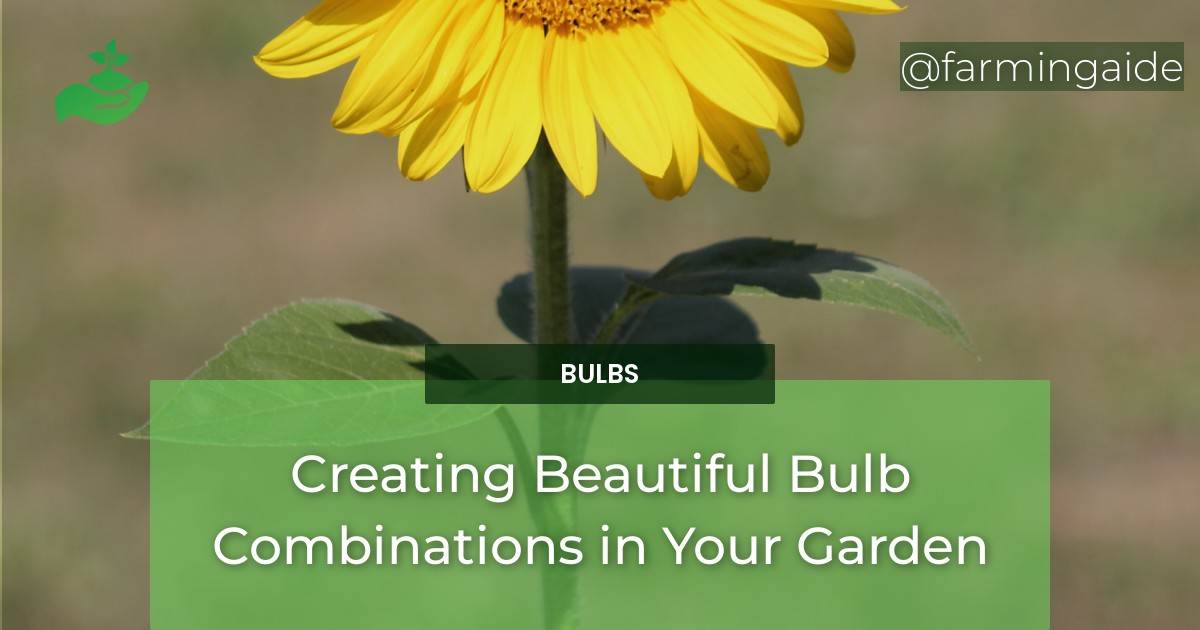Gardening brings joy to many people, and a well-designed garden can be a source of constant admiration. One of the most crucial aspects of garden design is the use of bulbs. Bulbs are versatile and can be used to create stunning combinations that will elevate the beauty of your garden. In this article, we will provide you with tips for selecting and pairing bulbs to create beautiful combinations that will make your garden the envy of all who see it. Whether you are a seasoned gardener or a beginner, this article will give you valuable insights into bulb combinations, garden design, planting tips, and pairing.
Tips for Selecting and Pairing Bulbs for Stunning Combinations
Consider Bloom Time and Duration
When selecting and pairing bulbs, it is essential to consider their bloom time and duration. You want to ensure that you have a constant display of colors and textures throughout the growing season.
Choosing Early, Mid, and Late Bloomers
One way to achieve a constant display of colors is to select bulbs that bloom at different times throughout the growing season. Early bloomers such as snowdrops, crocuses, and daffodils can be followed by mid-season bloomers such as tulips and hyacinths. Late bloomers such as alliums and lilies can be planted to provide color towards the end of the season.
Mixing Bulbs with Different Bloom Durations
Mixing bulbs with different bloom durations can also provide a constant display of colors and textures. For example, planting long-blooming bulbs such as dahlias with short-blooming bulbs such as muscari can create a beautiful combination that lasts throughout the growing season.
Look at Height and Form
The height and form of bulbs are crucial when it comes to creating beautiful combinations. You want to ensure that the taller bulbs are in the back and the shorter bulbs are in the front. This will create a sense of depth and add visual interest to your garden.
Combining Tall and Short Bulbs
Combining tall and short bulbs can create a sense of depth and add visual interest to your garden. For example, planting tall alliums with short tulips can create a beautiful combination that is both striking and harmonious.
Mixing Bulbs with Different Forms and Textures
Mixing bulbs with different forms and textures can also add visual interest to your garden. For example, pairing spiky alliums with round tulips can create a beautiful contrast that is both visually appealing and harmonious.
Play with Colors and Patterns
Colors and patterns are perhaps the most crucial aspect of bulb combinations. You want to ensure that the colors and patterns complement each other and create a harmonious look.
Choosing Complementary Colors
Choosing complementary colors is essential when it comes to creating beautiful bulb combinations. For example, pairing purple alliums with yellow daffodils can create a beautiful contrast that is both visually striking and harmonious.
Mixing Patterns and Shapes
Mixing patterns and shapes can also add visual interest to your garden. For example, pairing striped tulips with solid-colored hyacinths can create a beautiful contrast that is both visually appealing and harmonious.
Consider Growing Conditions
When selecting and pairing bulbs, it is essential to consider their growing conditions. You want to ensure that the bulbs you choose are suitable for the soil and sunlight conditions in your garden.
Choosing Bulbs for Sun and Shade
Choosing bulbs for sun and shade is crucial when it comes to creating beautiful bulb combinations. For example, planting sun-loving bulbs such as daffodils and tulips in sunny spots and shade-loving bulbs such as snowdrops and bluebells in shady spots can create a beautiful combination that is both visually appealing and harmonious.
Mixing Bulbs with Different Soil and Water Needs
Mixing bulbs with different soil and water needs can also create beautiful combinations. For example, pairing drought-tolerant bulbs such as alliums with moisture-loving bulbs such as lilies can create a beautiful contrast that is both visually appealing and harmonious.


